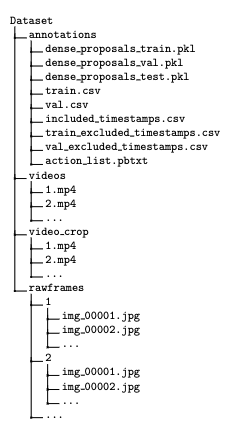一.for循环
for-in
实例1:
for index in 1...5{
print("\(index)times 5 is \(index * 5)")
}结果:
1times 5 is 5 2times 5 is 10 3times 5 is 15 4times 5 is 20 5times 5 is 251...5表示:[1,5]大于等于1且小于等于5
如果括号内不使用index,可以用_代替:
var a = 5
for _ in 1...5{
a += 1
}
print("\(a)")结果:
10
遍历数组:
let nameArr = ["Lili","Marry","xiaoming"]
for name in nameArr {
print("Hello,\(name)!")
}
结果:
Hello,Lili! Hello,Marry! Hello,xiaoming!
遍历字典:
let ageDict = ["Lili":9,"Marry":10,"xiaoming":12]
for (name,age) in ageDict {
print("\(name) is \(age)!")
}结果:
Marry is 10! Lili is 9! xiaoming is 12!由于字典是无序的,所以结果不一定按顺序输出。
二。while循环
语法:
while condition {
statements
}
举例:
//唉,举例无能
var a = 10
while a>0 {
a = a-2
}
print(a)结果:0
原来的do...while循环在此处替换成了repeat...while循环。(不举例了)
三。switch
实例:
let someCharacter: Character = "z" switch someCharacter { case "a": print("The first letter of the alphabet") case "z": print("The last letter of the alphabet") default: print("Some other character") }结果:
The first letter of the alphabet
* 注意:与C和Objective_C不同,3.0的swift中switch语句的case中不再需要使用break跳出switch语句,匹配条件后即跳出Switch语句,同时,switch中的default是必须的。
虽然break在switch中不再是必须的,但是由于switch中的case/default中语句不允许有空语句,此时,我们可以使用break跳出语句。
例如:
let anotherCharacter: Character = "a" switch anotherCharacter { case "a": // Invalid,the case has an empty body case "A": print("The letter A") default: print("Not the letter A") } if let integerValue = possibleIntegerValue { print("The integer value of \(numberSymbol) is \(integerValue).") } else { print("An integer value Could not be found for \(numberSymbol).") }case "a":是无效的,这将导致程序报错: 'case' label in a 'switch' should have at least one executable statement。
再看下面这个例子
let numberSymbol: Character = "三" // Chinese symbol for the number 3 var possibleIntegerValue: Int? switch numberSymbol { case "1","١","一","๑": possibleIntegerValue = 1 case "2","٢","二","๒": possibleIntegerValue = 2 case "3","٣","三","๓": possibleIntegerValue = 3 case "4","٤","四","๔": possibleIntegerValue = 4 default: break } if let integerValue = possibleIntegerValue { print("The integer value of \(numberSymbol) is \(integerValue).") } else { print("An integer value Could not be found for \(numberSymbol).") } // Prints "The integer value of 三 is 3."此时,default中的可能性很多,我们可能不再需要设置一个possibleIntegerValue的值,此时就可以使用break跳出switch语句。
间隔匹配:
例如:
let grade = 67
switch grade {
case 0...59:
print("不及格")
case 60...79:
print("及格")
case 80...89:
print("良好")
case 90...100:
print("优秀")
default:
break
}
//输出:及格
元祖(Tuples)匹配:
let somePoint = (1,1)
switch somePoint {
case (0,0):
print("(0,0) is at the origin")
case (_,0):
print("(\(somePoint.0),0) is on the x-axis")
case (0,_):
print("(0,\(somePoint.1)) is on the y-axis")
case (-2...2,-2...2):
print("(\(somePoint.0),\(somePoint.1)) is inside the Box")
default:
print("(\(somePoint.0),\(somePoint.1)) is outside of the Box")
}
// Prints "(1,1) is inside the Box"
下划线(_)也称为通配符,可以匹配任何可能的值。
值绑定:
let anotherPoint = (2,0)
switch anotherPoint {
case (let x,0):
print("on the x-axis with an x value of \(x)")
case (0,let y):
print("on the y-axis with a y value of \(y)")
case let (x,y):
print("somewhere else at (\(x),\(y))")
}
// Prints "on the x-axis with an x value of 2"
where:Switch中还可以使用where来设置附加条件
例如:
let yetAnotherPoint = (1,-1)
switch yetAnotherPoint {
case let (x,y) where x == y:
print("(\(x),\(y)) is on the line x == y")
case let (x,y) where x == -y:
print("(\(x),\(y)) is on the line x == -y")
case let (x,y):
print("(\(x),\(y)) is just some arbitrary point")
}
// Prints "(1,-1) is on the line x == -y"
控制转移语句:
1.continue;
2.break(不再重复说明);
3.fallthrough;
4.return.
5.throw。
continue:跳出当前循环,执行下一次循环。
例如:
let puzzleInput = "great minds think alike"
var puzzleOutput = ""
for character in puzzleInput.characters {
switch character {
case "a","e","i","o","u"," ":
continue
default:
puzzleOutput.append(character)
}
}
print(puzzleOutput)
// Prints "grtmndsthnklk"
fallthrough:条件匹配成功后,继续执行后面的语句。
例如:
let integerToDescribe = 5
var description = "The number \(integerToDescribe) is"
switch integerToDescribe {
case 2,3,5,7,11,13,17,19:
description += " a prime number,and also"
fallthrough
default:
description += " an integer."
}
print(description)
// Prints "The number 5 is a prime number,and also an integer."
return:跳出整个循环与语句。






